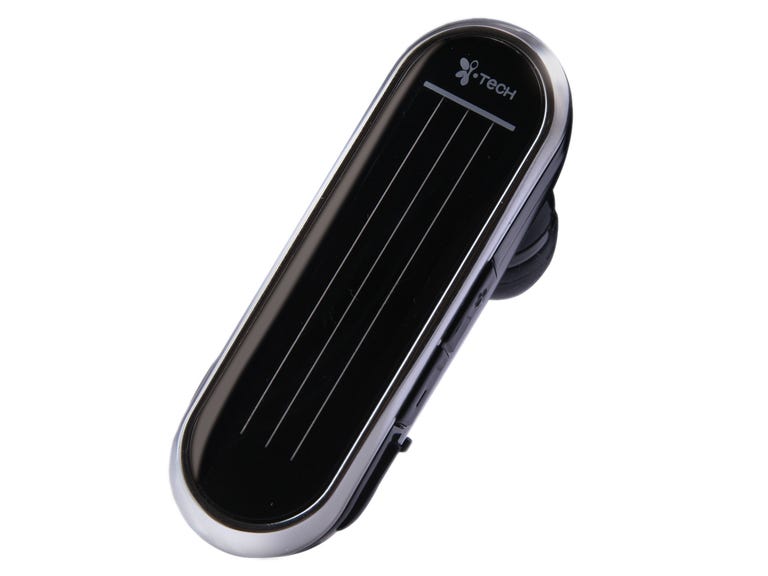 Why You Can Trust CNET
Why You Can Trust CNET i.Tech Solar Voice 905 Bluetooth Headset review: i.Tech Solar Voice 905 Bluetooth Headset
i.Tech Solar Voice 905 Bluetooth Headset
When we reviewed the Iqua 603 Sun a couple of years ago, it was the first and only solar-powered Bluetooth headset on the market. The idea was a smart one; if you're going to wear the headset all day long, you might as well charge it at the same time. Now there's another solar-powered headset, and it's the iTech SolarVoice 908. Not only does it have that telltale solar panel, but it also has multipoint technology and is A2DP compatible. The iTech SolarVoice 908 retails for around $75.
The Good
The Bad
The Bottom Line
If it wasn't for the slab of photovoltaic cell covering the entire front surface, the SolarVoice 908 would look like a fairly normal Bluetooth headset. Measuring 2.15 inches long by 0.68 inch wide by 0.49 inch thick, the SolarVoice 908 is long, lean, oval, and weighs around 0.42 ounce. It's encased in black plastic, with a silver chrome edging. The volume rocker and charger jack are on the right.
To make room for the aforementioned solar cell, the multifunction button and LED indicators are located on the left spine. This feels odd at first, but we soon got used to it, especially since the button is raised above the surface so it's easy to find by feel. There are two LED indicators: one for the Bluetooth status and another for the solar-charging status. The latter flashes green when the headset is solar charging.
According to iTech, the headset will charge under direct sunlight. We tried to do this, but the light did not flash green, so we assumed it wasn't working. That said, we were in foggy San Francisco at the time with little sunlight. We'll have to revisit this in sunnier weather.
Flip the headset around and you'll find a small protruding ear piece with a rubber earbud cover. The earbud has several grooves around it to mitigate ear fatigue. We were glad to see iTech include three more earbud sizes for a more customized fit; however, we still found the fit to be awkward, as the headset sticks out a bit when worn. We needed the ear hook for added stability.
We paired the iTech SolarVoice 908 with the Apple iPhone 3G. Call quality was fairly good on the whole. Incoming quality was very good, with clear and natural sound and little static. We did have to adjust the volume occasionally, but it wasn't too bad. Callers reported slightly harsher quality on their end, but could still hear us just fine. The quality did diminish a bit when we were in an especially noisy environment. For example, we tested the headset outside in the rain, and callers had a harder time hearing us.
Features of the headset include the typical call answering, ending, and rejecting, last number redial, call-waiting support, voice dial support, and the capability to transfer calls from the headset to the phone and vice versa. It also has multipoint technology, which lets it connect up to two devices at once, plus A2DP streaming in case you want to listen to music. It won't offer stereo quality, of course, but if you don't want to bother reaching for your headphones, this works for occasional listening.
If you don't have the chance to solar charge it, the iTech SolarVoice 908 has up to 5 hours talk time and up to 5.83 days standby time. Theoretically, it has infinite standby time in optimum sunlight, but as we said above, that isn't always possible. The headset comes with a desktop cradle that you can position on your car's dashboard or anywhere that gets the best sunlight.


